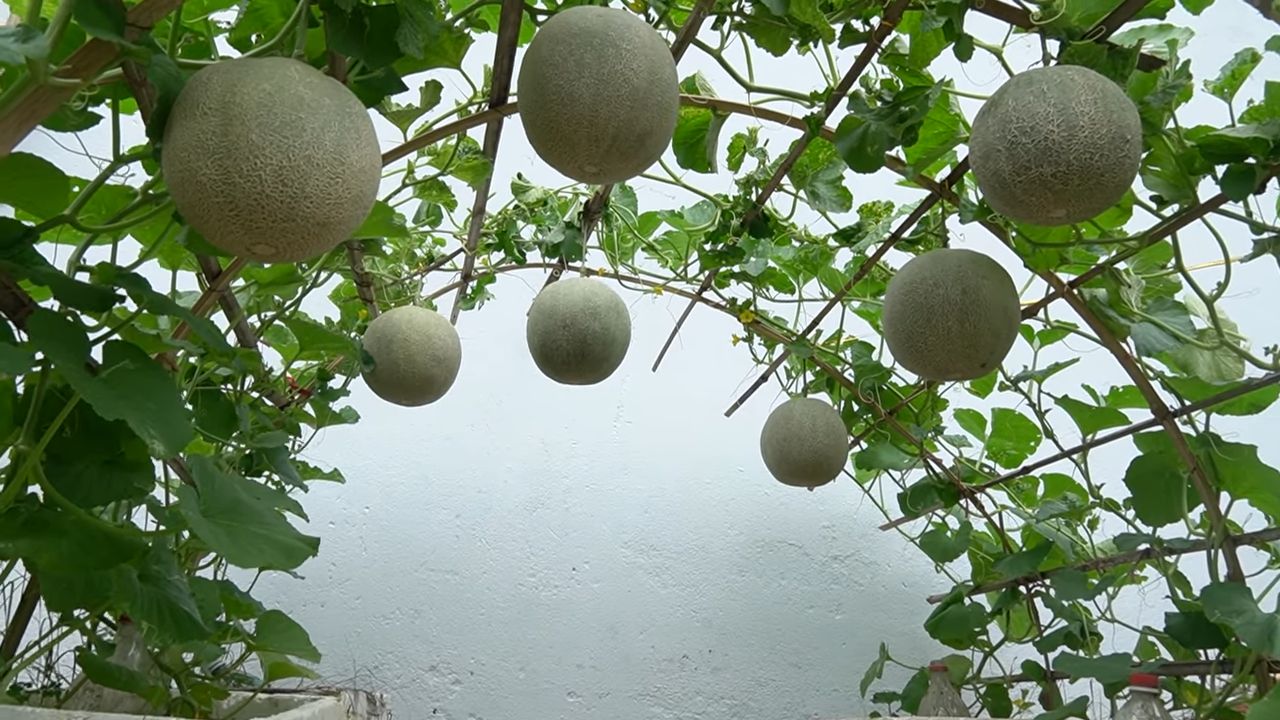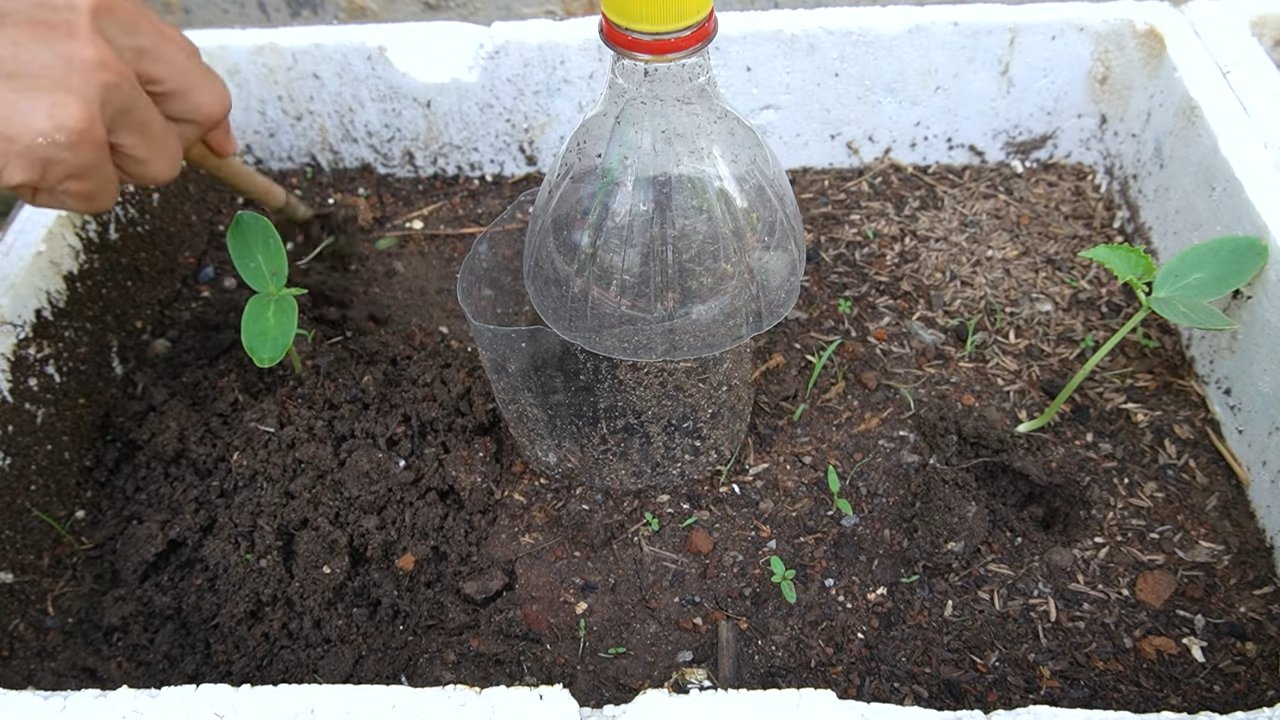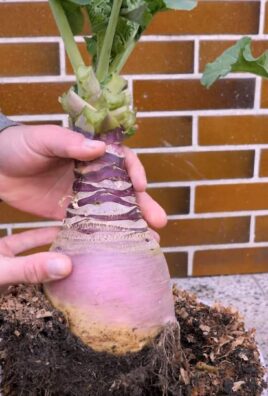Grow sweeter cantaloupe naturally? Absolutely! Imagine biting into a cantaloupe bursting with so much sugary goodness, it tastes like summer itself. Forget those bland, watery melons you often find at the grocery store. I’m here to share some simple, yet incredibly effective, DIY tricks to help you cultivate cantaloupes that are unbelievably sweet, right in your own backyard!
For centuries, cantaloupe has been a symbol of abundance and deliciousness, enjoyed by cultures around the globe. From ancient Egypt, where they were prized for their refreshing taste, to the sun-drenched fields of California, cantaloupes have always been a summertime favorite. But let’s be honest, achieving that perfect level of sweetness can sometimes feel like a gamble.
That’s where these DIY hacks come in. Many factors influence the sweetness of your cantaloupe, from soil composition to watering techniques. I’ll guide you through easy-to-implement strategies that address these factors, ensuring you grow sweeter cantaloupe naturally and consistently. No green thumb required! These tips will not only enhance the flavor but also potentially increase your yield. Get ready to impress your friends and family with the most delectable cantaloupe they’ve ever tasted!

DIY: Unlock the Secret to Super Sweet Cantaloupe at Home
Hey there, fellow gardening enthusiasts! Are you tired of bland, disappointing cantaloupe from the grocery store? Do you dream of biting into a juicy, intensely sweet melon grown right in your own backyard? Well, you’ve come to the right place! I’m going to share my tried-and-true methods for coaxing the sweetest possible flavor out of your cantaloupe plants. It’s not magic, just a little know-how and some TLC. Let’s get started!
Understanding Cantaloupe Sweetness
Before we dive into the how-to, let’s briefly touch on what makes a cantaloupe sweet in the first place. Several factors contribute:
* Genetics: Some cantaloupe varieties are naturally sweeter than others.
* Sunlight: Ample sunshine is crucial for sugar production.
* Water: Proper watering is essential, but overwatering can dilute the sugars.
* Nutrients: Balanced soil nutrition supports healthy growth and sweetness.
* Harvest Time: Picking the melon at the peak of ripeness is key.
Knowing these factors will help us tailor our approach for maximum sweetness.
Choosing the Right Cantaloupe Variety
The first step to sweet success is selecting a cantaloupe variety known for its flavor. While personal preference plays a role, some consistently deliver sweeter results. Here are a few of my favorites:
* ‘Athena’: This is a popular hybrid known for its disease resistance and consistently sweet flavor. It’s a reliable choice for many climates.
* ‘Hales Best Jumbo’: An heirloom variety with a classic cantaloupe flavor and aroma. It’s a bit more susceptible to disease but worth the effort for its taste.
* ‘Ambrosia’: Another hybrid known for its exceptional sweetness and smooth texture. It’s a good option for warmer climates.
* ‘Sugar Cube’: As the name suggests, this variety is incredibly sweet and perfect for smaller gardens.
When choosing, consider your local climate, disease resistance, and personal taste preferences.
Preparing the Soil for Sweetness
Cantaloupes are heavy feeders, meaning they need a lot of nutrients to thrive and produce sweet fruit. Proper soil preparation is crucial.
1. Choose a Sunny Location: Cantaloupes need at least 6-8 hours of direct sunlight per day. Select a spot in your garden that receives plenty of sunshine.
2. Test Your Soil: A soil test will tell you the pH level and nutrient content of your soil. Cantaloupes prefer a slightly acidic to neutral pH (6.0-7.0). You can purchase a soil testing kit at most garden centers or send a sample to your local agricultural extension office.
3. Amend the Soil: Based on your soil test results, amend the soil with organic matter such as compost, well-rotted manure, or leaf mold. This will improve drainage, aeration, and nutrient content. I usually add a generous amount of compost – about 2-3 inches – and work it into the top 6-8 inches of soil.
4. Add Fertilizer: Cantaloupes benefit from a balanced fertilizer. I like to use a slow-release organic fertilizer with an NPK ratio of around 5-10-10. Follow the package instructions for application rates. You can also add bone meal to provide phosphorus, which is essential for root development and fruit production.
5. Create Raised Beds (Optional): If your soil is heavy clay or poorly drained, consider creating raised beds. This will improve drainage and warm the soil faster in the spring.
Planting Cantaloupe for Maximum Sweetness
You can start cantaloupe seeds indoors 3-4 weeks before the last expected frost or direct sow them in the garden after the soil has warmed up to at least 65°F (18°C).
1. Starting Seeds Indoors (Optional): Sow seeds in peat pots or seed trays filled with seed-starting mix. Keep the soil moist and warm (around 75-80°F or 24-27°C). Once the seedlings have developed a few true leaves, they can be transplanted into the garden.
2. Direct Sowing: Sow seeds ½ inch deep and 18-24 inches apart in rows that are 4-6 feet apart. Water gently after planting.
3. Harden Off Seedlings: If you started seeds indoors, gradually acclimate them to outdoor conditions before transplanting. This process, called hardening off, involves exposing the seedlings to increasing amounts of sunlight and wind over a period of 7-10 days.
4. Transplant Seedlings: Once the soil has warmed up and the seedlings have been hardened off, transplant them into the garden. Space them 18-24 inches apart in rows that are 4-6 feet apart. Water thoroughly after transplanting.
5. Protect from Pests: Young cantaloupe plants are susceptible to pests such as cucumber beetles and squash bugs. Cover the plants with row covers to protect them from these pests. Remove the row covers when the plants begin to flower to allow for pollination.
Watering for Sweetness: The Delicate Balance
Watering is crucial for cantaloupe growth, but it’s a delicate balance. Overwatering can dilute the sugars in the fruit, while underwatering can stress the plant and reduce yield.
1. Water Deeply and Infrequently: Water deeply and infrequently, allowing the soil to dry out slightly between waterings. This encourages deep root growth and helps the plant withstand drought conditions.
2. Water at the Base of the Plant: Avoid wetting the foliage, as this can promote fungal diseases. Water at the base of the plant using a soaker hose or drip irrigation system.
3. Reduce Watering as the Fruit Ripens: As the cantaloupe fruits begin to ripen, gradually reduce watering. This will concentrate the sugars in the fruit and enhance its sweetness. I usually stop watering altogether about a week before I expect to harvest.
4. Monitor the Weather: Adjust your watering schedule based on the weather. If it’s been raining, you may not need to water at all. If it’s been hot and dry, you may need to water more frequently.
Fertilizing for Sweetness: A Boost of Nutrients
While we amended the soil before planting, cantaloupes benefit from additional fertilization during the growing season.
1. Side-Dress with Fertilizer: About 4-6 weeks after planting, side-dress the plants with a balanced fertilizer or compost tea. Side-dressing involves applying fertilizer along the sides of the plants, a few inches away from the stems.
2. Foliar Feeding (Optional): You can also foliar feed the plants with a diluted seaweed extract or fish emulsion. Foliar feeding involves spraying the leaves with a nutrient solution. This can provide a quick boost of nutrients and improve plant health.
3. Avoid Over-Fertilizing: Be careful not to over-fertilize, as this can lead to excessive vegetative growth and reduce fruit production. Follow the package instructions for application rates.
Pruning for Sweetness: Focusing the Energy
Pruning cantaloupe vines can help improve air circulation, reduce disease, and direct the plant’s energy towards fruit production.
1. Remove Suckers: Remove any suckers (small shoots that grow from the base of the plant) to encourage the plant to focus its energy on the main vines.
2. Pinch Back Vine Tips: Once the vines have reached a desired length (usually around 4-5 feet), pinch back the tips to encourage branching and fruit production.
3. Remove Excess Fruit: If the plant is producing too many fruits, remove some of the smaller ones to allow the remaining fruits to develop fully and become sweeter. I usually aim for 2-3 fruits per vine.
4. Improve Air Circulation: Prune away any crowded or overlapping leaves to improve air circulation and reduce the risk of fungal diseases.
Supporting the Fruit: Protecting Your Investment
As the cantaloupe fruits grow larger, they may need support to prevent them from rotting on the ground.
1. Use Mulch: Mulch around the plants with straw or wood chips to keep the fruits off the soil and prevent them from rotting.
2. Use Trellises (Optional): If you’re growing cantaloupes in a small space, you can train them to grow on a trellis. This will keep the fruits off the ground and improve air circulation. Use slings or netting to support the fruits as they grow larger.
3. Elevate the Fruits: You can also place the fruits on small platforms or bricks to keep them off the ground.
Pest and Disease Control: Protecting Your Sweet Harvest
Cantaloupes are susceptible to various pests and diseases. Here’s how to protect your plants:
1. Monitor Regularly: Regularly inspect your plants for signs of pests or diseases. Early detection is key to preventing serious problems.
2.

Conclusion
So, there you have it! Unlocking the secret to growing sweeter cantaloupe naturally isn’t about complicated techniques or expensive equipment. It’s about understanding the plant’s needs and providing the right conditions for it to thrive. By focusing on sunlight, proper watering, strategic pruning, and that all-important sugar boost in the final weeks, you can significantly enhance the sweetness of your homegrown cantaloupe.
This isn’t just about bragging rights (though, let’s be honest, serving a perfectly sweet, homegrown cantaloupe is definitely something to be proud of!). It’s about experiencing the true flavor potential of this delicious fruit and enjoying the satisfaction of nurturing something from seed to table. Imagine biting into a cantaloupe bursting with natural sweetness, a flavor far superior to anything you can find in the grocery store. That’s the reward waiting for you.
Don’t be afraid to experiment with variations. Try different types of organic fertilizers during the growing season to see which yields the best results in your specific soil. Consider using reflective mulch to maximize sunlight exposure, especially if you live in an area with less intense sun. You could even try companion planting with herbs like basil or marigolds, which are known to deter pests and potentially improve the overall health of your cantaloupe plants.
Remember, patience is key. Growing sweeter cantaloupe naturally takes time and attention. But the effort is well worth it when you taste the fruits (literally!) of your labor. We encourage you to give this DIY trick a try this growing season. You might be surprised at how easy it is to transform your cantaloupe from ordinary to extraordinary.
And most importantly, we want to hear about your experience! Did you notice a significant difference in sweetness? Did you try any variations that worked particularly well? Share your tips, tricks, and triumphs in the comments below. Let’s create a community of cantaloupe enthusiasts who are passionate about growing the sweetest, most delicious fruit possible. Your insights could help other gardeners achieve cantaloupe perfection! So go ahead, get your hands dirty, and prepare to be amazed by the naturally sweet cantaloupe you can grow yourself.
Frequently Asked Questions (FAQ)
Q: How much sunlight does cantaloupe need to grow sweeter?
A: Cantaloupe thrives in full sun, requiring at least 6-8 hours of direct sunlight per day. More sunlight translates to more photosynthesis, which is the process by which the plant converts sunlight into energy and sugars. Insufficient sunlight will result in smaller, less sweet fruits. If you live in a particularly cloudy area, consider using grow lights to supplement natural sunlight.
Q: What kind of fertilizer is best for growing sweeter cantaloupe?
A: During the growing season, use a balanced organic fertilizer with equal parts nitrogen, phosphorus, and potassium (e.g., 10-10-10). Avoid over-fertilizing with nitrogen, as this can promote leafy growth at the expense of fruit production. In the final weeks before harvest, switch to a fertilizer higher in phosphorus and potassium (e.g., 5-10-10 or 5-15-15). Phosphorus promotes root development and flowering, while potassium enhances fruit quality and sweetness. Bone meal and wood ash are excellent natural sources of phosphorus and potassium, respectively.
Q: How often should I water my cantaloupe plants?
A: Cantaloupe plants need consistent watering, especially during hot, dry weather. Water deeply and regularly, aiming to keep the soil consistently moist but not waterlogged. Avoid overhead watering, as this can promote fungal diseases. Drip irrigation or soaker hoses are ideal for delivering water directly to the roots. In the final weeks before harvest, reduce watering slightly. This will concentrate the sugars in the fruit, resulting in a sweeter flavor.
Q: When should I start pruning my cantaloupe plants?
A: Begin pruning your cantaloupe plants once they have developed several true leaves. Remove any suckers (small shoots that grow from the base of the plant) to encourage the plant to focus its energy on fruit production. As the plant grows, you can also prune away some of the older, yellowing leaves to improve air circulation and prevent disease. Be careful not to remove too many leaves, as they are essential for photosynthesis.
Q: How do I know when my cantaloupe is ripe and ready to harvest?
A: Several signs indicate that a cantaloupe is ripe. The most reliable indicator is the stem. When the cantaloupe is ripe, the stem will begin to crack and separate easily from the vine. You should be able to gently tug on the fruit, and it will slip off the vine with minimal effort. Other signs of ripeness include a change in color from green to tan or yellow, a fragrant aroma, and a slightly softened rind.
Q: Can I use sugar directly on the soil to make my cantaloupe sweeter?
A: While the article suggests using a diluted sugar solution, directly applying granulated sugar to the soil is not recommended. It can attract pests, disrupt the soil’s microbial balance, and potentially harm the plant. The diluted sugar solution is absorbed through the leaves, providing a direct energy boost to the fruit without negatively impacting the soil.
Q: What if my cantaloupe still isn’t sweet after trying these tips?
A: Several factors can affect the sweetness of cantaloupe, including genetics, soil conditions, and weather. If your cantaloupe isn’t as sweet as you’d like, consider trying a different variety next year. Also, ensure that your soil is well-drained and rich in organic matter. Extreme weather conditions, such as prolonged periods of rain or drought, can also impact fruit sweetness. Finally, remember that even with the best care, some cantaloupes may simply not be as sweet as others.
Q: Are there any specific cantaloupe varieties that are known for being sweeter?
A: Yes, some cantaloupe varieties are naturally sweeter than others. Some popular choices for sweeter cantaloupe include ‘Athena’, ‘Ambrosia’, ‘Hales Best Jumbo’, and ‘Sugar Cube’. Research different varieties that are well-suited to your local climate and growing conditions.
Q: How does the sugar solution actually work to make the cantaloupe sweeter?
A: The diluted sugar solution provides a readily available source of energy for the cantaloupe plant during the final stages of fruit development. When the plant absorbs the sugar through its leaves, it can directly convert it into sucrose, the sugar that makes cantaloupe taste sweet. This bypasses the need for the plant to produce all the sugar itself through photosynthesis, allowing it to accumulate more sugar in the fruit.
Q: Can I use honey instead of sugar in the solution?
A: While you can technically use honey, it’s generally not recommended. Honey is more complex than simple table sugar and contains other compounds that may not be as easily absorbed by the plant. Additionally, honey can attract pests and potentially promote fungal growth. Table sugar (sucrose) is the most effective and readily available option for this DIY trick.




Leave a Comment